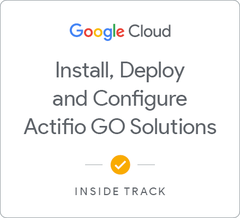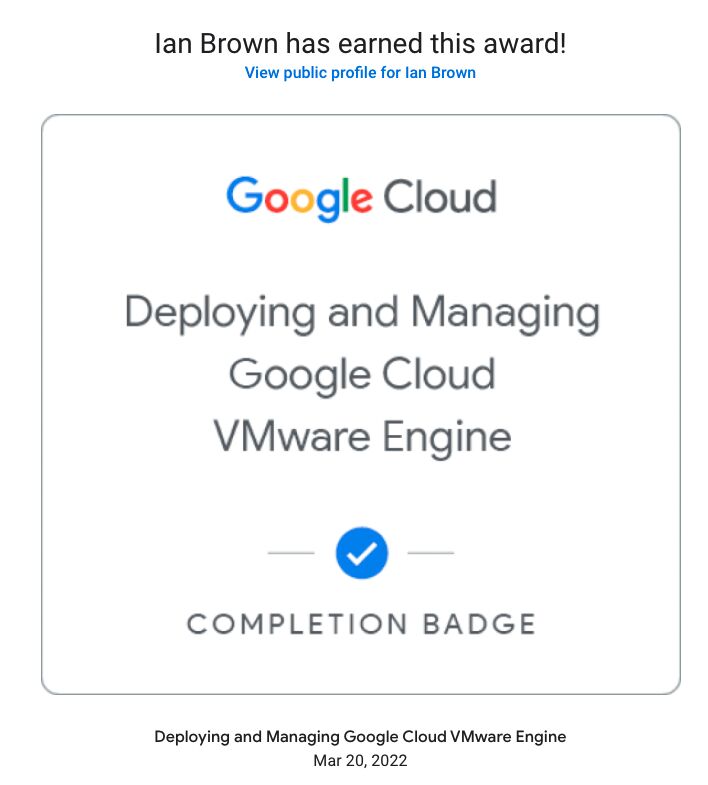GCVE Backup and Disaster Recovery
Picking up where we left off last month, let’s dive into disaster recovery and how to use Site Recovery Manager and Google Backup & Protect to DR into and within the cloud with GCVE.
But before we do, a quick advertisement:
If you are in Brisbane, Australia, I suggest coming to the awesome Google Infrastructure Group (GIG) which focuses on GCVE where on 04 July 2022 I will be presenting on Terraform in GCVE.
DR Options in GCVE
GCVE allows us two options for disaster recovery. These are:
- Site Recovery Manager for Hyperscalers
- Actifio Go (recently purchased by Google)
Site Recovery Manager
Since VMware is a first party service within GCP, you can always call upon the GCP support folks to assist if/when you run into issues. (One of the best reasons to use GCVE over other VMware as a Service offerings!)
Some features of SRM within GCVE are:
- Fast and reliable recovery: Site Recovery Manager automates every aspect of executing a recovery plan to accelerate recovery and eliminate the risks involved with manual processes.
- Simplified disaster recovery management: Create and manage centralized recovery plans for thousands of VM.
- Support for multiple topologies for maximized flexibility: On-premises to Google Cloud VMware Engine, Google Cloud VMware Engine to on-premises, and inter-region between two Google Cloud VMware Engine nodes.
- Automated orchestration workflows: Perform a DR failover or a planned migration, and failback recovered VMs to the original site, all executing the same recovery plan with a single click.
- Automated recovery of network and security settings: Eliminate the need to re-configure IP addresses on recovered VMs via integration with NSX. Security policies are also preserved, further reducing configurations post-recovery.
- Non-disruptive recovery testing: Perform automated failover testing as frequently as needed in an isolated network to avoid impact to production applications, and ensure regulatory compliance through detailed reports.
- Support for multiple topologies for maximized flexibility: On-premises to Google Cloud VMware Engine, Google Cloud VMware Engine to on-premises, and inter-region between two Google Cloud VMware Engine nodes.
Using SRM within GCVE is exactly the same as using SRM in your on-prem vSphere environment.
Follow the Google & VMware documentation to get SRM up and running within your GCVE cluster.
GCVE SRM Documentation
SRM Documentation
I won’t go into detail on how to get this solution working since it is well documented in the above links. However, I will make note that once you have deployed the vReplication appliances, you can also manage replication with HCX if you don’t have a SRM license which is required if you want the full SRM experience.
Actifio Go
Google recently purchased Actifio Go which is a nicely integrated backup solution for GCP workloads. Since the platform can run in VMware (GCVE) or GCE, it is an ideal solution for those considering a new backup product.
Actifio Go can help:
- Increase business availability by simplifying and accelerating backup and DR at scale, across cloud-native, and hybrid environments.
- Automatically back up and protect a variety of workloads, including enterprise databases like SAP HANA, Oracle, Microsoft SQL Server, PostgreSQL, and MySQL, as well as virtual machines (VMs) in VMware, Hyper-V, physical servers, and Google Compute Engine.
- Bring significant efficiencies to data storage, transfer, and recovery.
- Accelerate application development and reduce DevOps cycles with test data management tools.
There is a well put together document on installing and configuring Actifio Go within GCE here: https://docs.actifio.com/Actifio-GO/PDFs/ActifioGODeploymentGuide.pdf
If you wish to install the product within GCVE, Actifio have good documents available to get you started here:
Actifio Global Manager
Actifio Sky Appliance
A note on storage in Sky appliances: Since you cannot delete the default snapshot pool, make it as small as possible and then allocate larger pools that can be deleted if required. Also, never expand a snapshot disk in GCVE, simply create a new one and add it to the pool. Sky does not support resizing disks.
Conclusion
I haven’t gone into detail on getting DR & Backup solutions working in GCVE as how you structure your backup and DR is likely different from how I would do it. The documentation I have linked to is well written and is kept up to date.
Whether you are looking for a new backup solution or just to implement a solid DR solution, Google in partnership with VMware has you covered.




